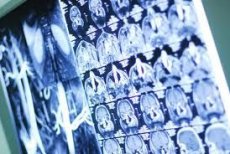New publications
Scientists have discovered a way to "read a person's mind"
Last reviewed: 01.07.2025

All iLive content is medically reviewed or fact checked to ensure as much factual accuracy as possible.
We have strict sourcing guidelines and only link to reputable media sites, academic research institutions and, whenever possible, medically peer reviewed studies. Note that the numbers in parentheses ([1], [2], etc.) are clickable links to these studies.
If you feel that any of our content is inaccurate, out-of-date, or otherwise questionable, please select it and press Ctrl + Enter.

American researchers have demonstrated an amazing method for reconstructing words that exist only as thoughts in the human brain.
The "mind reading" technique, described in a publication in the journal PLoS Biology, is based on collecting electrical signals sent by the brain.
Patients listened to audio recordings of various words, devices recorded the signals arising in the brain, and then, using a computer model, scientists reconstructed the words “sounding in the heads” of the patients.
It turns out that each word has its own unique set of brain impulses.
This method may in the future help comatose or paralyzed patients communicate with others.
Deep into the brain
Discoveries in recent years have shown that scientists are getting closer to a method that will allow them to directly "tap into" people's thoughts.
Participants in a 2010 study by neuroscientists from Missouri and New York were able to control a cursor on a computer screen with their thoughts - through electrodes connected directly to the brain. By silently saying individual vowels, they moved the cursor in the desired direction.
A technique called " functional magnetic resonance imaging " has opened up new possibilities - it has become possible to identify specific words or concepts that a person is thinking about at a given moment by tracking blood flow in the brain.
In September 2011, a group of researchers from the University of California, Berkeley, led by Jack Gallant, took this method into service.
Think "Ah-ah"
By studying the blood flow patterns that correspond to specific images that arise in the mind, the scientists demonstrated how patterns in these patterns can be used to guess what image or picture a subject is thinking about - essentially reconstructing the mental "movie" that is "spinning" in a person's head.
Now another Berkeley scientist, Brian Paisley, and his colleagues have gone even further down the path of "thought-image reconstruction."
"We were inspired in many ways by Jack's work," says Dr Paisley. "The question was, how far could we go into the human auditory system using the same computer modelling approach?"
Key convolution
The researchers focused on one area of the brain - the superior temporal gyrus.
This part of the auditory system is one of the most highly organized areas of the brain, responsible for the fact that we extract some meaning from the flow of sounds, distinguish words and understand their linguistic meaning.
A team of researchers tracked wave signals from the superior temporal gyrus in 15 surgical patients during operations to treat epilepsy or remove brain tumors.
Patients were played an audio recording in which various speakers read words and sentences.
The most difficult part was untangling the chaotic flow of electrical impulses that arose in the temporal lobe while listening to the audio recording.
Using a computer model, a "map" was created indicating which parts of the brain send impulses and with what intensity when the ear hears sounds at different frequencies.
The patients were then given a range of words to choose from and had to select one and think about it.
It turned out that the same computer model allows one to guess which word the subject chose.
Scientists have even managed to recreate some words by converting the recorded brain impulses back into sound waves according to a computer "map".
Double effect
"This work kills two birds with one stone," says one of the study's authors, University of California, Berkeley professor Robert Knight. "First, fundamental science has now penetrated even deeper into the mechanisms of the brain."
"And from a practical standpoint, people with speech impairments might be able to use this technology: when they can't speak, they can visualize in their minds what they want to say," Knight explains. "Patients have given us valuable information, and it would be nice to thank them in this way."
The report's authors caution, however, that there is a great deal of work to be done to improve the technique of "reading thought patterns," and that a device that can decipher thoughts will not appear anytime soon.
